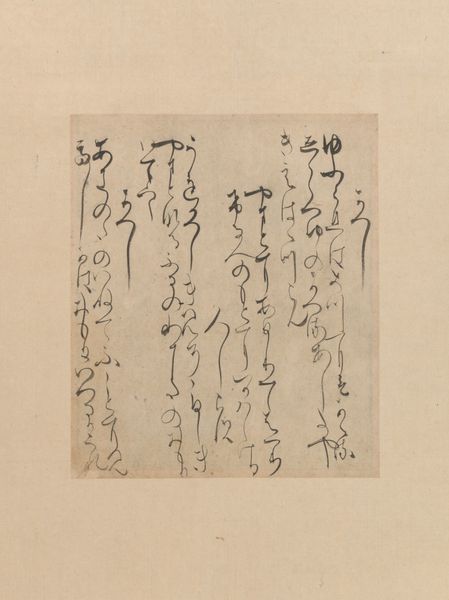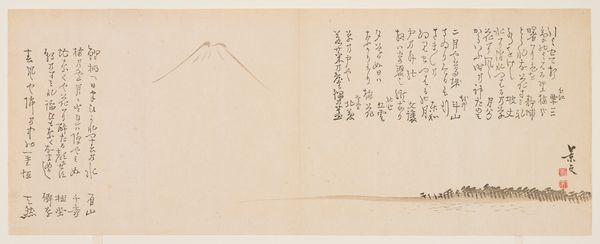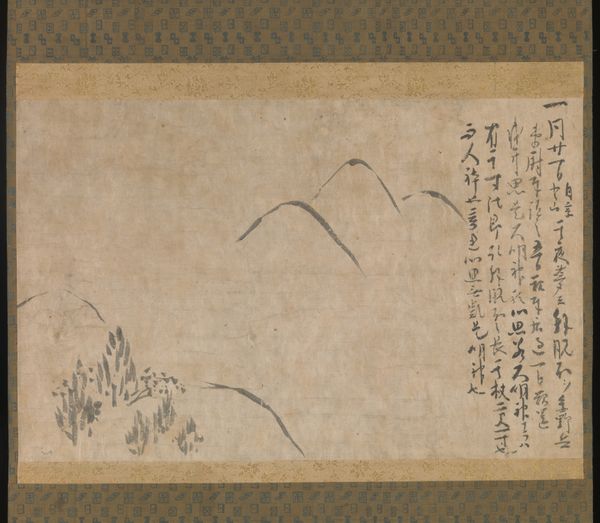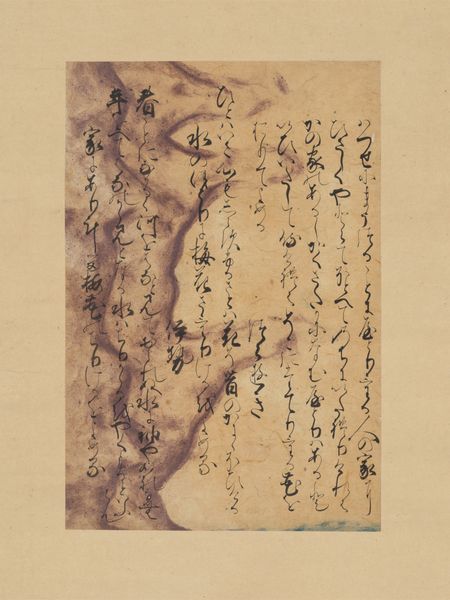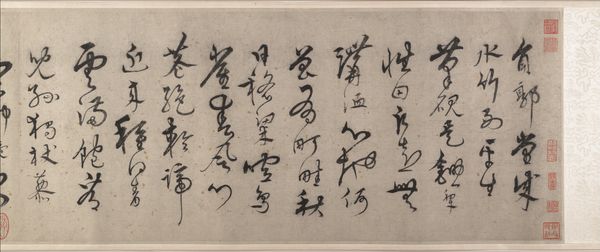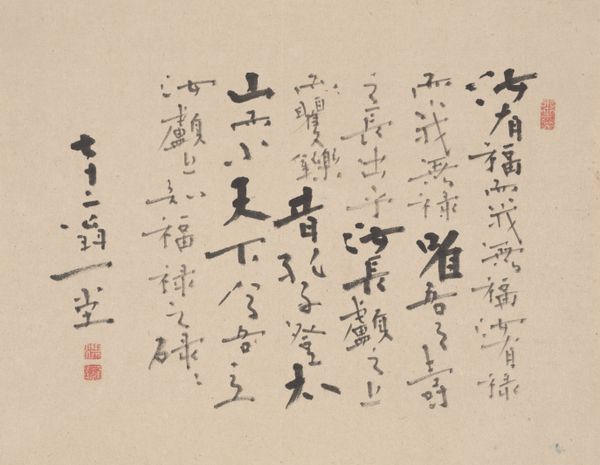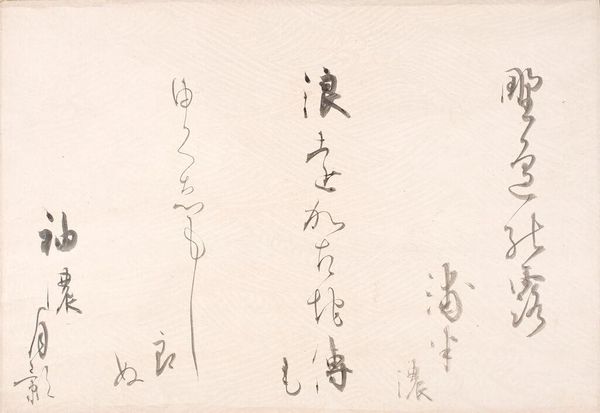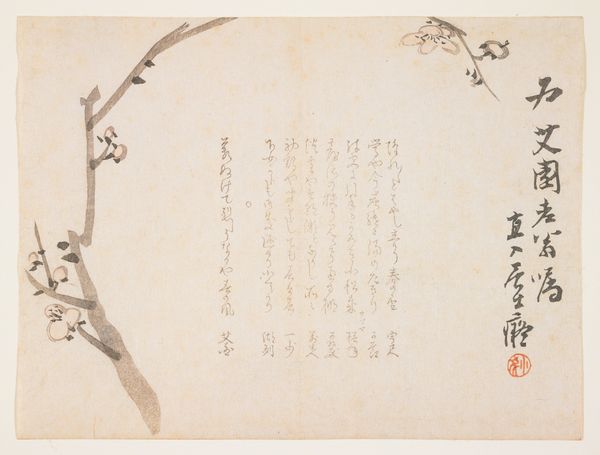
paper, ink-on-paper, ink
#
asian-art
#
landscape
#
ukiyo-e
#
paper
#
ink-on-paper
#
ink
#
calligraphy
Dimensions: 14 × 16 9/16 in. (35.56 × 42.07 cm) (image)46 3/16 × 17 9/16 in. (117.32 × 44.61 cm) (mount, without roller)
Copyright: Public Domain
Editor: This piece is called "Mt. Fuji" by Karasumaru Mitsuhiro, dating from the late 16th to mid 17th century. It’s ink on paper and housed here at the Minneapolis Institute of Art. What strikes me first is its stark simplicity, how minimal the representation of the mountain is, contrasted with the intricate calligraphy. What do you make of it? Curator: The juxtaposition of the mountain’s sparse outline with the dense calligraphic elements is indeed key. Notice how the varying pressure and speed of the brushstrokes in the calligraphy create a dynamic rhythm across the surface. It's the materiality of the ink itself—its varying densities and textures—that defines the work. How does the placement of the mountain relative to the text affect your reading of the composition? Editor: I see the mountain as a grounding force. Its horizontal lines stabilize the swirling, almost chaotic, calligraphy. Without it, the text might feel unbalanced. It is a kind of focal point around all the text, do you agree with that? Curator: The mountain serves as a visual anchor, certainly. But also, consider how its muted grayscale contrasts with the intense black of the ink. This contrast is a defining characteristic. Furthermore, analyze how negative space contributes to the work's overall effect. It amplifies certain aspects of the painting, and it focuses my attention. Editor: That's a really interesting point. So, by analyzing the ink, its contrast, and the negative space, we can see how the artist is creating balance and rhythm in this seemingly simple piece. Curator: Precisely. By examining these intrinsic elements, we uncover the complex relationships and visual strategies at play, regardless of historical or cultural narratives. That is what makes formalist perspective compelling. Editor: I never considered how much the lack of ink could speak, or give a balance to something like calligraphy. This was helpful. Thanks for your time!
Comments
No comments
Be the first to comment and join the conversation on the ultimate creative platform.
